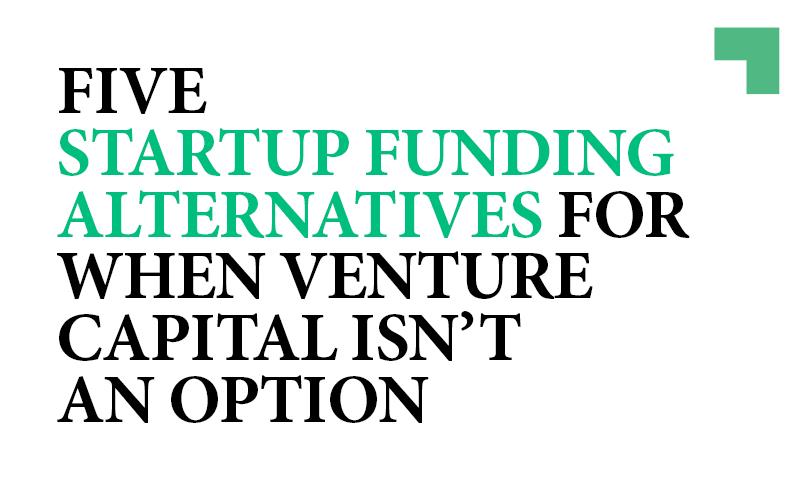Five Funding Alternatives for When Venture Capital Isn’t an Option
With funds becoming scarcer today, many founders are forced to be creative and look beyond venture capital funding.

Funding in the first of half of 2023 dropped by more than 21% in MENA to a little under $1.6 billion, compared to $2 billion during the same period last year, according to data by Wamda. Geopolitical conflicts, macroeconomic challenges, and rising interest rates have impacted investor appetite in the region, as well as across the globe.
With funds becoming scarcer today, many founders are forced to be creative and look beyond venture capital funding. Although generally viewed as a good opportunity for startups, VCs tend to look for fast growth and high returns on their investments - sooner rather than later - in return for equity.
The growing difficulty in raising investments is pushing startups to seek alternative funding options. Below are five ways startups can raise capital for their startup:
BOOTSTRAPPING
Perhaps one of the most traditional ways of funding is bootstrapping. Bootstrapping means that founders fund the startup themselves, whether through personal savings, investments or using revenue cash flow to help grow and scale their business.
This type of funding usually happens in the early stages of a startup, before a company seeks equity funding, such as seed funding or series A. But some startups rely on bootstrapping as the sole method of funding in order to retain full control and ownership of their company, without the pressure and influence of external investors, as is the case with Egyptian femtech startup Rahet Bally.
“Rahet Bally proudly has been a bootstrapping startup until today,” Nadia Gamal El Din, Founder and CEO of Rahet Bally, tells StartupScene. “We’ve been profitable since year two of operations, and we’re very proud of that, because as you can see when the bubble bursts, it shows how fast people are burning money. But we’ve been frugal and efficient with our resources, and we actually create and capture value, which makes us sustainable and profitable.”
By being careful and resourceful with capital, Rahet Bally was able to be lean, efficient and rely on revenues to fuel growth. But not all startups can be fully bootstrapped, especially if they need cash flow to grow and scale. To do that, they often have to rely on other sources of funding.
ANGEL INVESTORS
Angel investors are typically individuals who have enough cash to spare and are looking for opportunities to make a return on their investments. They are usually successful entrepreneurs and professionals who are interested in investing in a venture they find interesting in exchange for some equity.
Dina El Mofty, founder of INJAZ Egypt, an organisation with a strong educational focus on entrepreneurship, is an angel investor who has invested in several new and emerging startups.
“One of the nicer things about angel investing is that you can start out the journey with a founder, where you’re almost like partners, and you grow something together,” El Mofty says. “The chemistry between the investor and the founder is very important, however. The founder has to be selective in their investor, and the investor has to be selective in who they choose to invest in as a founder.”
Although some angel investors may opt to simply allocate a certain amount of funding in a startup without getting too involved, most tend to offer mentorship, expertise and networking opportunities to support a startup’s growth.
Like VCs, angel investors provide funding in exchange for equity, and take some profit when the startup is sold.
FAMILY OFFICES
Family offices are also another alternative for startups to consider when raising capital. Unlike VCs, family offices tend to look for more stable, long term positive cash flow as opposed to exponential growth.
Family offices are privately held offices that manage the wealth and investments for a high-net-worth family. They have increasingly been investing in startups and emerging companies, often as limited partners (LPs) in VC funds.
Arwa Shafi, manager of the TAQADAM Accelerator Program in Saudi Arabia, believes that while family offices may have been around for a long time, their involvement in the startup space is still relatively new. “Startups need to approach family offices differently than VCs,” she says. “With family offices, founders need to think strategically beyond the funding, because usually they have their own background and experience, and their own focus in a specific industry or vertical. As a result, founders need to do their homework to find synergies with the existing companies of this family office, and think what additional benefit they can bring to the deal and not be tunnel blinded by the funding, equity and valuation only.”
Besides focusing on strategic industries and verticals, Ihab Tabbara, startup mentor in Saudi Arabia, adds that family offices are usually more interested in later stage startups, such as series A or pre-series A. “They don’t usually take startups in seed funding or pre-seed funding,” he says. “They want to see some sort of revenue, some sort of traction, so that they will be interested in funding the startup.”
Regardless, family offices can provide valuable capital to startups, and should be considered an alternative financing option, especially if there is an alignment in business goals and objectives.
ACCELERATORS
Accelerators can sometimes be an overlooked funding source for startups. They are known to play a valuable role in the startup ecosystem by providing focused programs, mentorships, and networking opportunities. They can also provide seed capital and grant money to startups.
“Accelerators are a great opportunity for startup founders,” Ihab Tabbara says. “By being in an accelerator program, founders have access to mentors, VCs, angel investors, and may be eligible to receive grant money that will help bootstrap their business.”
But like any program, accelerators require significant time commitment from the founders, anything between three to six months. For startups who are already time strapped, it can be difficult to commit to an accelerator program.
“Although it’s time consuming, it’s worth the effort,” Tabbara says. “It connects you with the right people, and it opens doors for you.”
It's worth noting that some accelerators take equity in exchange for funding. The higher the funding amount, the higher the equity.
VENTURE DEBT
Venture debt is quickly emerging as a popular alternative to VC funding. Instead of selling equity, it enables startups to take out loans from banks and nonbank lenders with the agreement that it will be paid back with interest.
Wael Amin, Partner at Sawari Ventures, cautions about this type of funding. “Almost 90% of companies that we see taking on venture debt should not be trying to get this type of financing,” Amin previously told Startup Scene. “Instead, they should be working on their business model, cash flow cycle, changing their pricing, spending less on acquisition etc.”
The main advantage of this type of funding is that startups don’t have to give up equity or ownership of their company to investors, making it appealing for many founders. In times of cash scarcity, startups may also opt for this type of financing to extend their runway and stay afloat, but they should closely examine their financials before taking on venture debt so that they don’t fall in the debt trap. “It’s not a substitute to generating profit or being in a profitable business, so it should be used as a growth accelerator or a working capital accelerator,” Amin said.






















